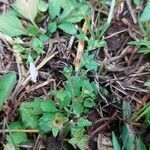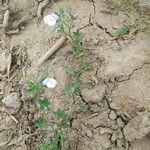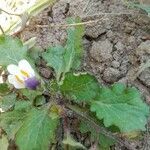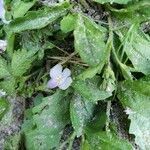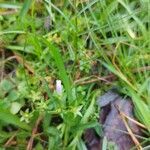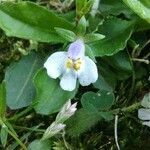Annuals, 3-30 cm tall, glabrous or sparsely pubescent. Primary root perpendicular, elongated or shortened; fibrous roots numerous, scattered or tufted. Stems 1 or more, erect, ascending, or procumbent-ascending, rooting from prostate nodes. Basal leaves early deciduous or few to numerous and sometimes rosulate; leaf blade obovate-spatulate to ovate-oblanceolate, 2-6 cm, membranous to papery, base cuneate and decurrent, margin coarsely and irregularly toothed or pinnately parted with 1 or 2 lobules, rarely subentire, apex entire or obscurely and sparsely toothed. Stem leaves opposite or few alternate. Racemes terminal, elongated to apically fascicled, usually 3-20-flowered, lax. Pedicel 3-12 mm. Calyx campanulate, 3-8 mm, enlarged in fruit or not; lobes ovate, almost as long as tube, apex acute. Corolla white, purple, or blue, ca. 1 cm; lower lip middle lobe smaller than lateral lobes, slightly exserted, obovate; upper lip lobes ovate-triangular. Ovary glabrous. Capsule globose. Fl. and fr. Apr-Oct.
More
A low herb. It grows 6-20 cm high. The leaves form a ring at the base. They are spoon shaped. They are 2-6 cm long. The base is wedge shaped. There are irregular coarse teeth along the edge. The leaves on the stem are smaller. The flowers are small and purple-blue. The fruit is a capsule 4 mm across. The seeds are small.
Wet grassland, along streams, trailsides, waste fields, wet places and the edges of forests, grassland on mountain slopes at elevations of 1200-3800 metres in China.
